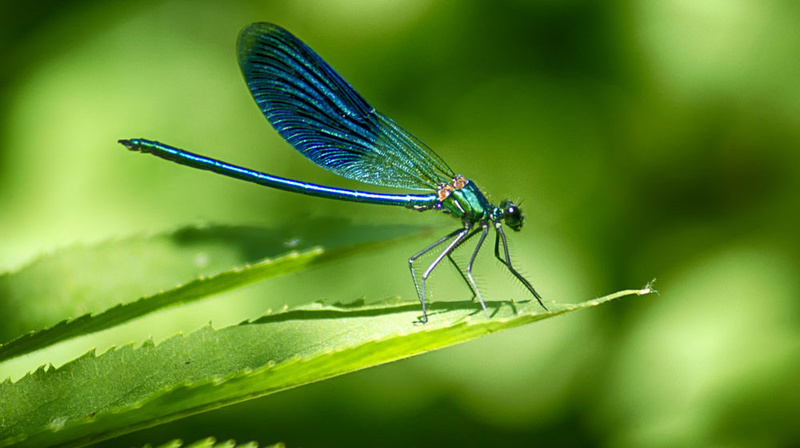
Invite These Bugs to Stay
Many garden bugs are beneficial to the landscape in that their diet consists of harmful insects. From lady bugs to dragonflies to earwigs, beneficial insects will consume mosquitoes, lawn-destroying chinch bugs, and soft-bodied pests that compromise leaf health and appearance.
You may be squeamish about bugs, but did you know that some bugs are good to have around?
These “good” bugs, known as beneficial insects, are helpful because their diet consists of bugs that damage lawns and plants. Provide a welcoming environment to beneficial bugs and you will have less need to spray pesticides and insecticides.
In this blog we look at a few of the beneficial insects found in Florida.
ASSASSIN BUGS
No less than 160 species of assassin bugs call North America home, and a number of these are found in the Sunshine State. Nymphs and adults both inject venom into flies, aphids, mosquitoes and other soft-bodied insects. They are a half to one inch long.
BIG-EYED BUGS
This insect eats chinch bugs which are annually responsible for millions of dollars of lawn damage in Florida. The big-eyed bug is about 1/8 inch long, looks like a chinch bug with big eyes, and also eats small caterpillars and soft-bodied bugs.
DRAGONFLIES
Dragonflies eat flying insects including mosquitoes. Dragonfly nymphs, which are aquatic, eat mosquito larvae. Homeowners who wish to attract dragonflies to their properties should not spray pesticides as dragonflies are sensitive to the chemicals.
EARWIGS
Earwigs eat lawn pests such as chinch bugs, sod webworms, and small mole crickets. They are highly beneficial in this regard; a single earwig can consume up to 50 chinch bugs per day. They are black or brown, approximately one inch long, and have pincers at the ends of their abdomens.
LACEWINGS
These good bugs help keep aphids and other small insects under control. Aphids and other soft-bodied insects are responsible for compromised leaf health and for excreting honeydew—the substance that sooty black mold grows on. Lacewing larvae eat these pests. They are green or brown, with transparent wings.
LADY BUGS AND LADY BEETLES
These easily recognizable bugs are usually roundish in shape, dark with bright spots or red with dark spots, and about ¼ inch long. They are great controllers of soft-bodied pests such as aphids, scale, mealybugs, and mites. Voracious eaters, they will consume 200-500 aphids as larvae and even more as adults. They also eat insect eggs.
PARASITIC WASPS
These are tiny bugs, usually less than 1/8 inch long. They burrow into the bodies of aphids, whiteflies, scales, leaf-miners, and caterpillars, laying eggs and eventually killing their hosts. The most common species of parasitic wasps are ichneumon, braconid, and chalcid wasps.
PRAYING MANTIS
Another easily recognizable insect, the large (three inches long) praying mantis sits stock-still on shrubs, stems, and window screens, front legs folded as if in prayer, waiting quietly for unsuspecting insect prey to come by.
SPIDERS
Although spiders are not an insect, we include them in this list because they are beneficial in the garden. They spin webs to catch harmful bugs or jump on them from positions on the ground or in foliage.
STINK BUGS
Beneficial stink bugs eat harmful insects and caterpillars. They have short beaks and spines on their bodies. (There is also a species of stink bug that is not beneficial.)
For more information on beneficial bugs, visit University of Florida IFAS Extension.
#floralawn #landscapecompany #commerciallandscape #beneficialbugs #ladybugs #dragonflies